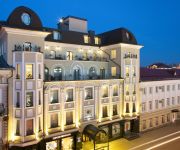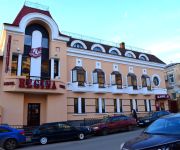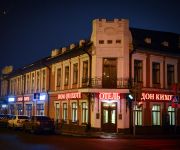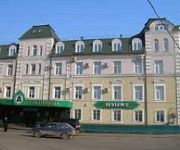Facts and Data
Webpages:
Official Unesco Page
Basis Data:
Unesco World heritage since: 2000
Size of heritage: 13 ha
- Buffer zone: 115 ha
Coordinates:
Longitude: 49,095°
Latitude: 55,791°
Summary
Built on an ancient site, the Kazan Kremlin dates from the Muslim period of the Golden Horde and the Kazan Khanate. It was conquered by Ivan the Terrible in 1552 and became the Christian See of the Volga Land. The only surviving Tatar fortress in Russia and an important place of pilgrimage, the Kazan Kremlin consists of an outstanding group of historic buildings dating from the 16th to 19th centuries, integrating remains of earlier structures of the 10th to 16th centuries.
Location on Map
Show bigger map on Openstreetmap
Historic and Architectural Complex of the Kazan Kremlin
The Historic and Architectural Complex of the Kazan Kremlin, located in the City of Kazan, Republic of Tatarstan, is a UNESCO World Heritage site that showcases the rich history and architectural beauty of this region in Russia. This complex is a testament to the cultural and religious diversity that has shaped the city over the centuries.
History
The Kazan Kremlin has a long and storied history that dates back to the 10th century. It served as the political, religious, and cultural center of the Kazan Khanate, a medieval Tatar state. The original fortress was constructed in the 12th century and underwent several reconstructions and expansions over the years.
One of the most significant events in the history of the Kazan Kremlin was the Siege of Kazan in 1552, when Ivan the Terrible's forces captured the fortress and ended the rule of the Kazan Khanate. This marked the beginning of the incorporation of the Tatar lands into the Russian Empire.
During the 16th and 17th centuries, the Kazan Kremlin underwent extensive reconstruction under the guidance of Russian architects. The complex became a symbol of the Russian conquest and the assimilation of Tatar culture into the Russian Empire.
Architectural Beauty
The Kazan Kremlin is a remarkable blend of architectural styles, reflecting the diverse influences that have shaped the region. The complex features elements of Tatar, Russian, and Islamic architecture, creating a unique and harmonious ensemble.
One of the most iconic structures within the Kazan Kremlin is the Qol Sharif Mosque, which was reconstructed in the 21st century. This mosque, with its stunning blue domes and intricate ornamentation, serves as a symbol of the revival of Islam in the region.
Another notable building is the Annunciation Cathedral, a masterpiece of Russian Orthodox architecture. Built in the 16th century, it showcases the grandeur and beauty of Russian religious art.
Current State
The Historic and Architectural Complex of the Kazan Kremlin is meticulously preserved and maintained, allowing visitors to experience the grandeur of its past. The complex is open to the public and offers guided tours, providing insights into the history, architecture, and cultural significance of the site.
Today, the Kazan Kremlin serves as a cultural and historical hub, hosting various events and exhibitions that celebrate the region's heritage. It is also home to several museums, including the State Historical and Architectural Museum-Reserve, which houses a vast collection of artifacts and artworks.
The Kazan Kremlin continues to be a symbol of unity and tolerance, representing the coexistence of different cultures and religions in the region. It stands as a testament to the rich history and architectural legacy of Kazan, captivating visitors with its beauty and historical significance.
Hotels and places to stay
Mirage Hotel
Ramada Kazan City Center
DoubleTree by Hilton Kazan City Center
Regina na Universitetskoy
Ilmar City Hotel
Don Quixote
Express Hotel
Shushma Hotel
Milena
Kazantel
Videos from the area
Videos provided by Youtube are under the copyright of their owners.

















